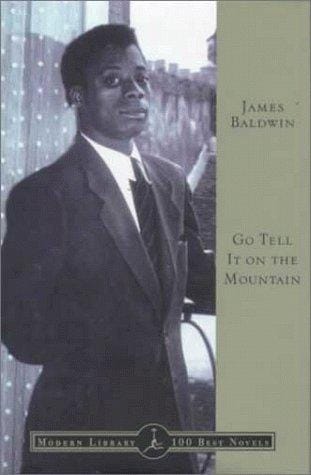A Deep Dive into Go Tell It on the Mountain (Modern Library Edition)
Explore themes, history, and critical insights into James Baldwin's Go Tell It on the Mountain with a focus on the Modern Library edition.

Introduction to a Modern Classic
Since its first publication in 1953, James Baldwin27s "Go Tell It on the Mountain" has been hailed as one of the most important African-American novels of the twentieth century. The Modern Library edition, with its critical apparatus and enduring typography, introduces a new generation of readers to Baldwin27s semi-autobiographical coming-of-age story. At roughly 800 words, this article explores the plot, themes, historical context, and the distinctive features that make the Modern Library version worth adding to your shelf.
Plot Overview Without Spoilers
Set over the course of a single Saturday night in 1935, the novel follows fourteen-year-old John Grimes as he prepares to receive spiritual salvation in a Harlem storefront church. Interwoven flashbacks broaden the narrative, unpacking the complex histories of John27s parents, Gabriel and Elizabeth, and his fierce Aunt Florence. What emerges is a layered portrait of sin and redemption, faith and doubt, and the way personal trauma can echo across generations.
Themes That Resonate Today
Faith versus skepticism lies at the heart of "Go Tell It on the Mountain." Baldwin explores the dual promises of religion: refuge from racism and poverty on one hand, and a tool of repression on the other. Sexual identity, moral hypocrisy, and institutional violence all surface through vividly rendered interior monologues. These concerns remain fresh for contemporary readers who see similar struggles in today27s cultural debates over religious conservatism, LGBTQ+ rights, and racial justice.
An equally compelling theme is the search for identity. John27s classroom success has created distance from his working-class Black peers, while his religious upbringing complicates his budding awareness of sexuality. Baldwin27s treatment of these tensions predates the language of intersectionality, yet his insights feel uncannily modern, reminding us that personal liberation and social transformation are tightly linked.
Historical and Cultural Context
Writing in the shadow of the Harlem Renaissance and on the cusp of the Civil Rights Movement, Baldwin situates his characters in a vibrant yet harsh 1930s Harlem. Segregation, unemployment, and police brutality loom large in their lives. The Great Migration has brought Gabriel and Florence north from the Jim Crow South, but the promise of freedom has been tempered by systemic inequity. Baldwin witnessed all of this first-hand; his ability to weave social commentary into intimate family drama elevates the novel beyond autobiography to a universal tale of American inequality.
Narrative Technique and Language
"Go Tell It on the Mountain" is celebrated for its lyrical prose and shifting perspectives. Baldwin employs biblical cadences, jazz rhythms, and vernacular speech to capture the beauty and burden of Black American life. The narrative moves seamlessly between first, second, and third person, mirroring the multifaceted nature of human memory. In doing so, Baldwin invites readers to inhabit multiple interior landscapes, forging empathy across generational divides.
Why Choose the Modern Library Edition?
The Modern Library imprint is known for producing authoritative texts, and this edition of "Go Tell It on the Mountain" is no exception. It includes a thoughtful foreword that contextualizes Baldwin27s life and times, as well as detailed endnotes that illuminate biblical allusions, historical references, and linguistic nuances. High-quality paper, a sewn binding, and a minimalist dust jacket complete the package, making this version durable for both scholars and casual readers.
Another advantage is the uniform trim size that aligns with other Modern Library classics. If you collect the series, this volume sits attractively beside works by Toni Morrison, Ralph Ellison, and Zora Neale Hurston, underscoring Baldwin27s rightful place in the American canon.
Critical Reception and Legacy
Upon release, "Go Tell It on the Mountain" garnered praise from eminent critics such as Langston Hughes, who lauded Baldwin for his literary daring. Over the decades, it has become a staple on school syllabi and banned-book lists alike, proof of its capacity to unsettle and enlighten. Toni Morrison cited Baldwin27s influence on her own writing, and Ta-Nehisi Coates has credited the novel with expanding his understanding of narrative voice. In 1998, Time magazine included it in its list of the 100 best English-language novels published since 1923.
Reading Tips for First-Time Explorers
1. Approach the text slowly: Baldwin27s dense symbolism rewards attentive reading. Consider jotting down biblical references for later reflection.
2. Toggle between past and present: The novel27s nonlinear structure can be initially disorienting. Mark chapter breaks to clarify timelines.
3. Read aloud: The cadence of Baldwin27s sentences entrances when spoken, highlighting his background as a preacher27s stepson.
4. Pair with scholarship: Essays by scholars like Henry Louis Gates Jr. and literary critic Susan Stryker enrich understanding of Baldwin27s queer subtext.
Comparisons to Other Baldwin Works
If "Go Tell It on the Mountain" whets your appetite, Baldwin27s later novels provide intriguing continuities and contrasts. "Giovanni27s Room" shifts the setting to Paris and focuses explicitly on same-sex desire, while "Another Country" broadens the scope to interracial relationships and existential angst. Themes of religious doubt, identity, and social critique recur, but each work experiments with new voices and geographies, showcasing Baldwin27s growth.
Conclusion: A Vital Read for the Twenty-First Century
Nearly seventy years after its debut, "Go Tell It on the Mountain" continues to challenge and inspire. The Modern Library edition enhances accessibility without diluting complexity, offering both the casual reader and the seasoned academic a text to revisit repeatedly. Whether you are drawn by Baldwin27s poetic language, his fearless exploration of race and sexuality, or his incisive critique of institutional power, this novel promises insights that resonate far beyond its Harlem storefront church setting. Add it to your reading list, and let Baldwin27s timeless voice ring out once more from the mountaintop.



